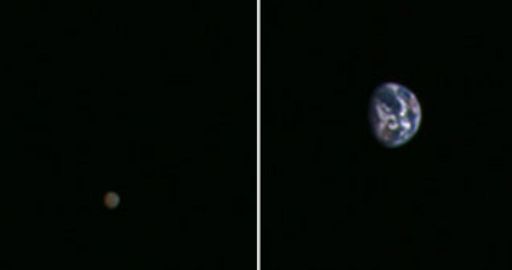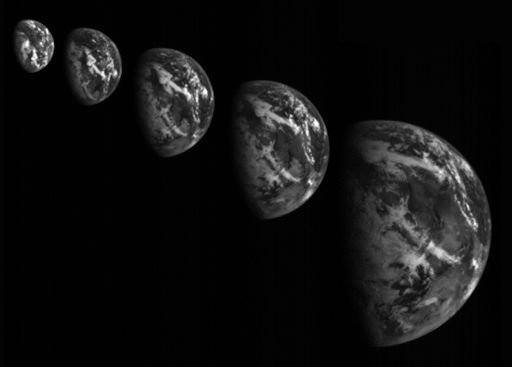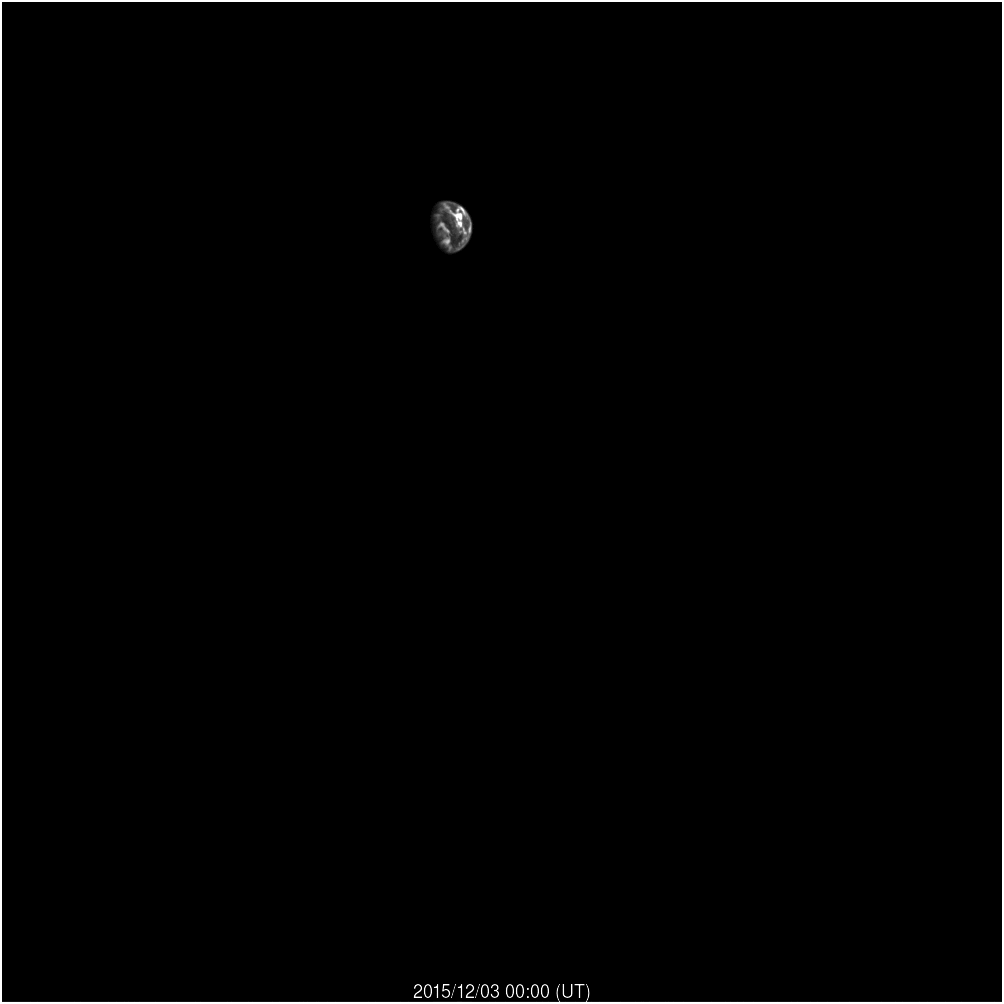Many readers have never heard of Hayabasa 2. It is an amazing mission. After the spacecraft reaches Ryugu in 2018, it will orbit the asteroid for a year and a half. During that time, Hayabasa 2 will deploy four landers and drop a copper impactor toblow a hole in the asteroid's side. Hayabasa 2 itself will touch down on the asteroid, briefly, at least once to collect samples excavated by the impactor. In Dec. 2019, the spacecraft will leave the asteroid and use its ion engines to return to Earth, carrying precious samples of Ryugu. Ambitious? Yes. But if Hayabasa 2 completes even a fraction if its mission, it will be a success.
The spacecraft is small (mass: 590 kg, dimensions: 2 x 1.6 x 1.25 meters), so when it flies by Earth it will not be very bright. A telescope will be required to see it.
Veteran satellite observer Rick Baldridge notes that "for the US west coast, the spacecraft gets barely 7 degrees above the western horizon at closest approach. Observers in Alaska, Hawaii and Japan are favored. Ephemerides for specific locations may be obtained on the JPL HORIZONS website."
Bron: http://www.spaceweather.com/
Hayabasa 2 nam deze foto op 26 november van de aarde en de maan op een afstand van 3 miljoen km

According to JAXA analysts, you can see the Australian continent on the right, the Eurasian continent covered by clouds on the left, and the white vertical areas between them are clouds over the equator. Better views are expected as Hayabasa approaches Earth in the hours ahead.
Bron:http://www.spaceweather.com/
Japan's Hayabusa 2 spacecraft swung past Earth on Dec 3rd at 7:08 p.m. JST, passing over the Pacific Ocean around the Hawaiian islands at an altitude of about 3,090 km. The slingshot maneuver was designed to propel Hayabusa 2 toward asteroid Ryugu, the target of an ambitious sample return mission in 2018-2020. JAXA (the Japanese space agency) says the spacecraft is in good health following the flyby.
Bron:http://www.spaceweather.com/
SPACECRAFT BUZZES EARTH, PROCEEDS TO ASTEROID:
Japan's Hayabusa 2 spacecraft swung past Earth on Dec 3rd at 7:08 p.m. JST, passing over the Pacific Ocean around the Hawaiian islands at an altitude of about 3,090 km. JAXA (the Japanese space agency) has just released these images of our planet taken by the speeding probe:
More images are available here with captions in Japanese.
The flyby was a slingshot maneuver designed to propel Hayabusa 2 toward asteroid Ryugu, the target of an ambitious sample return mission in 2018-2020. JAXA says the spacecraft is in good health following its close encounter with Earth.
Bron:http://www.spaceweather.com/
Foto's op de site van Jaxa:


Bron:http://www.hayabusa2.jaxa.jp/topics/20151203/

 Interplanetary spacecraft to buzz earth on dec.3rd.
Interplanetary spacecraft to buzz earth on dec.3rd.




